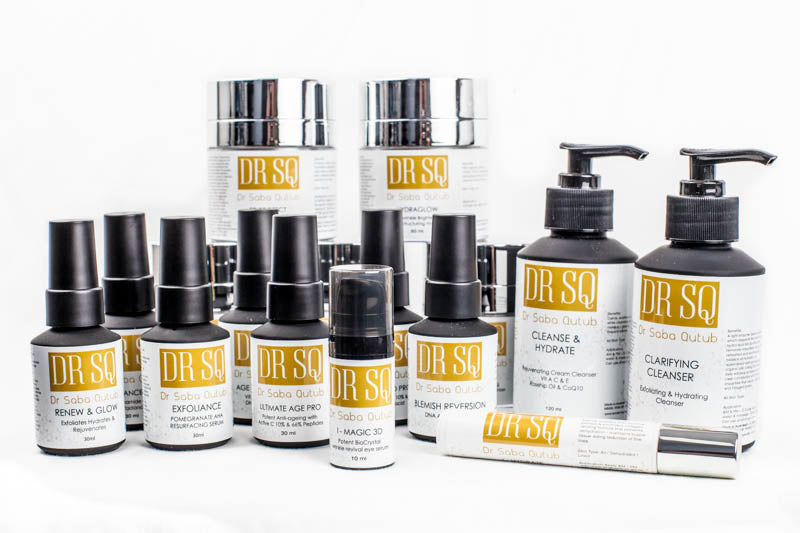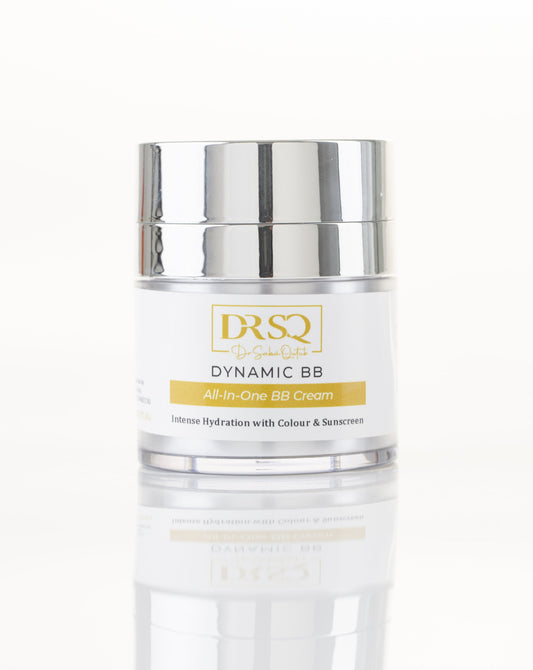Glycolic Acid Vs Salicylic Acid: The Better Choice for Your Skin

Choosing between skincare ingredients may feel like a science experiment, especially when you are stuck with many popular opinions around. If you have ever wondered, 'Should I use glycolic acid or salicylic acid?', you may be one of them struggling to find the right exfoliant for their skin. These two acids are powerful exfoliators, though each serves different skincare goals.
This blog will break down everything you need to know about using salicylic acid or glycolic acid by comparing them, understanding their benefits, their incorporation into your skincare routine, and which skin types they suit the best.
What is Glycolic Acid & Its Benefits
You may have heard of AHAs, a group of water-soluble acids (which work best when dissolved in water). derived from natural sources, including plants and animals. Glycolic acid is a kind of AHA or alpha hydroxy acid, a very popular skincare ingredient and a useful exfoliant.
Might be suitable for sensitive skin, glycolic acid can exfoliate the top layer and show fast-paced results.
Primarily derived from sugarcane, glycolic acid has a small molecular size that makes it easy to pass your skin’s barrier, penetrate your skin and resolve the issue from within. They can sweep your dead skin cells away making them ideal for cleansers. What most people love about glycolic acid is it doesn't dry out your skin.
Let's see some of the noteworthy benefits of glycolic acid;
- It works well on hyperpigmentation and skin congestion by fading dark spots.
- This acid can brighten your skin, make it even and provide the glow you always wanted.
- You can try it to fight the signs of ageing including fine lines and wrinkles and make them reduced in appearance.
- It can aid your skin's dryness and flakiness. On the other hand, it might tighten the skin too.
- People suffering from skin irritation, swelling, and inflammation might find relief in glycolic acid.
What is Salicylic Acid & Its Benefits
On the contrary to glycolic acid, salicylic acid is a type of BHA or beta hydroxy acid. BHAs are oil-soluble acids that are exfoliating too, just like glycolic acid. Salicylic acid, the most commonly used BHA can do wonders for oily skin types.

This acid is naturally found in wintergreen leaves and willow bark but can be synthesised in laboratories too. Primarily helpful to remove the excessive production of sebum in your skin, it can give you smooth and healed skin with its consistent use. Let's see what benefits can salicylic acid offer to us;
- It cleanses the skin deeply and removes dirt, sebum, and dead skin cells to make your skin clean and healthy. This practice makes your skin a clean canvas to absorb other ingredients.
- Salicylic acid can reduce acne and congestion by controlling the activity of sebaceous glands.
- It can also reduce blackheads, and the size of your enlarged pores, and contributes to your overall skin's texture.
What Skin Types Should Utilise Each?
Glycolic Acid: People with oily, combination, and normal skin types can benefit from this AHA. Skincare experts suggest people struggling with acne-prone skin and breakouts to try out glycolic acid. But ones with sensitive skin should create a safe distance with this acid as it can cause irritation and itching in some cases too.
Salicylic Acid: It's popular for oily skin but considered safe for all skin types. If you have extremely dry skin or sensitive skin, you must consult your dermatologist to take a piece of advice before start using this acid. They can advise you to begin with lower concentrations and check your skin's toleration level.
Also Read: AHA Vs BHA: Know the Difference
Potential Side Effects of Both Acids
Both these skincare ingredients can show big and significant changes to your skin, but there can be some side effects too. These side effects or reactions can occur due to a wide array of reasons, including your skin type, concentration, allergies, sensitivity and much more.
Side Effects of Glycolic Acid
If you are new to glycolic acid, mild irritation and itching are common. But if these symptoms do not go away even after multiple uses, you must ask your dermatologist. Moreover, if you are facing more than these reactions, it's recommended to stop using this acid immediately.
Side Effects of Salicylic Acid
You can face some mild reactions in the beginning that are a lot similar to glycolic acid. If you feel a little itchy and dry, it can be a usual reaction that is not harmful. But if it stays, it's time to see your dermatologist!
Precautions While Using Both
Always start with a lower concentration of glycolic acid and allow your skin to accept it. If you are someone who has recently undergone skin treatments, like microdermabrasion, you are advised to avoid using glycolic acid as it can lead to the skin's sensitivity. Don't use it right after waxing and laser treatments.
When it comes to salicylic acid, it’s considered as safe as glycolic acid. If you are breastfeeding, consulting your doctor would be a smart idea.
Avoid combining both of them with other strong actives and perform a patch test before use.
Can You Combine Glycolic and Salicylic Acid?
The general answer is workable, you can use both of them together, especially if they are present in one skincare product. But you need to go with some sincere precautions. Using two exfoliants together can be a little risky for your skin so, it's usually suggested to use them in lower strength and always do a patch test.

Ask your dermatologist before incorporating both into one skincare routine. See if your skin can tolerate them without any adverse reactions. It can affect the pH of your skin which can further active reactions in your skin making it prone to breakouts and redness.
Which Works Better As a Chemical Peel?
It depends on your skin type and skin concerns. Glycolic Acid is a good choice if you have dry or sensitive skin. Salicylic Acid is a good option for oily or acne-prone skin. Also while Glycolic Acid peel is better at targeting hyperpigmentation, signs of ageing and uneven skin tone; Salicylic Acid better targets acne, blocked pores and blackheads.
Glycolic Acid Vs Salicylic Acid: Which is Better for Acne?
In terms of acne, both glycolic and salicylic acid function effectively. But if you want to go for any one of these, try salicylic acid as it is more beneficial for oily skin and acne. It reduces the oil in the skin, an anti-inflammatory with exfoliating properties.
Our skin produces sebum which can further increase the chances of getting breakouts, inflammation, and post-acne hyperpigmentation along with enlarged pores. Your skin can multiply bacterial growth causing acne. Salicylic acid can be used strictly with discipline to prevent it.
Products with Glycolic Acid and Salicylic Acid
Clarifying Cleanser: 2.5% AHA gel cleanser has an appropriate amount of glycolic acid that can refine your skin's texture and target fine lines and wrinkles.

Along with ingredients like aloe vera, vitamin B5, and lactic acid, this cleanser hydrates your skin giving a youthful and bright complexion.
Renew & Glow: If you want to reap the benefits of both without getting into the debate of salicylic acid vs glycolic acid, it's an effective daily exfoliating serum with both glycolic acid and salicylic acid together in adequate concentration. Glycolic acid will remove dead cells while salicylic acid prevents clogged pores paired with other benefits.

It also has niacinamide - an all-rounder ingredient and hyaluronic acid that deeply hydrates your skin from within the deeper layers.
Repair Serum: This serum has 5% salicylic acid, perfect for targeting your blackheads and pigmentation.

This lightweight formula gently exfoliates the skin with its anti-inflammatory and anti-bacterial properties and stimulates new cell growth with peptides.
Final Takeaway
Both glycolic acid and salicylic acid are beneficial for the skin if used the right way. It's crucial to understand your skin before you start using any of these exfoliants so that they can align with your concerns and resolve them.
In case your skin is sensitive, or you suffer from skin conditions such as eczema or psoriasis, you need to take the dermatologist's advice before starting them on your own. This can save your skin from reactions and possible side effects.



